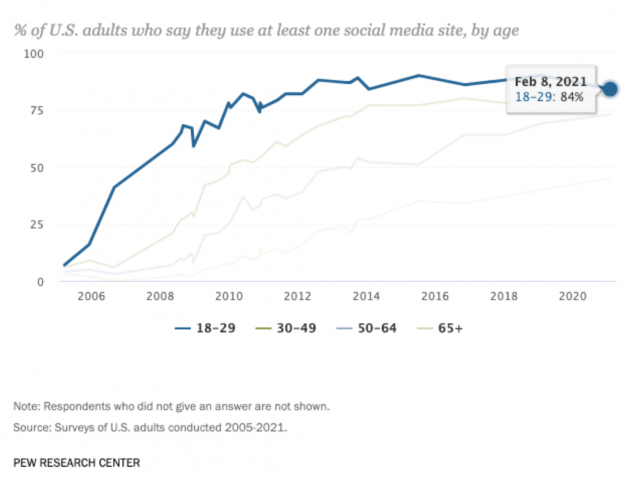Fake Networks
October 14, 2021
By Faisal Ahmed
It has recently become a trite phrase. We’ve all heard someone say “Social media has taken over our lives’”. But it’s trite because it’s true. According to Pew Research’s Social Media fact sheet over 80% of individuals between the ages of 18-29 visit at least one social media site each day. Considering the recent innovations of social media this is truly a staggering number. For context, Facebook was founded in 2004 and Instagram followed soon after in 2010. Young people use social media to talk with their friends, find entertaining content, and of course share memes with one another. Long gone are the days when we only saw our friends at school, or on the playground. Now we have constant reminders through their stories of their lives and happenings, and often hear from them through the various groupchats we find ourselves in.

This is in stark contrast to the history of human connections. Just 200 years ago neither the airplane nor the telegram even existed. Making connections internationally was virtually impossible, instead a persons’ social network was limited to their friends and family in the communities wherein they lived. Social pressure often further limited those with whom one could socialize with. While this sounds overwhelmingly negative. It seems to come with its own benefits. For example, one would expect to have deeper social connections as their relationships can be built upon generations of community and good will. Furthermore, we also believe that scarcity makes the heart grow fonder. If there were a limited number of opportunities for someone to communicate with their friends, maybe they’d take full advantage of the opportunities to communicate that they got.
The advent of modern social media flips this kind of dynamic on its head. Some people have more followers on instagram than people in the past used to meet in their entire lives. Instead of being limited to seeing friends in person when available, we are constantly have a window into each other’s lives. This experiment seems not to have demonstrated overwhelmingly negative results. In 2019, over 30% of individuals between the ages of 18-25 years old struggled with their mental health. This Pew Research Center survey further details the negative impacts of a digital life: Read here.
The most commonly cited source of anxiety from social media is the lack of meaningful connection as experienced by its users. People who use social media often feel alone, in spite of all of the friends and followers that they’re supposed to have. This seems to be because social media has subverted the ways in which we communicate with those that we care about. Instead of calling or arranging to meet with our friends, we assume that posting on our story is sufficient to let them know what we’re up to and that we’re having a good time. However, this is insufficient on several accounts. Namely that this kind of messaging pales in comparison with in-person interactions, which have been reported to make people happier and healthier. In addition, when you post on your story you haven’t really told your friends or loved ones about the experiences, moods and attitudes which you’ve experienced which deprives the interaction of the subtle nuances that shine when we have in-person interactions. In this way, we continuously are bombarded with superficial happenings of our peers without feeling like we’re a part of it, which worsens the lonely sentiments. Every time your friends hang out without you, you know.
All this being said, while I claim to be an optimist and believe that social media has connected us in ways that have enabled collaborations people in the past could only dream of. It would’ve taken months for someone to simply cross the ocean to deliver a message, something we can now do in seconds. Our social networks also allow us to continue to keep in touch with friends and loved ones long after we’ve been separated by geographic location. If we can find ways to leverage the positives of social media to enhance our relationships by using it to facilitate in-person interactions or more meaningful interactions, while limiting the hubbub we face through people’s stories, I hope we can convert what are superficial or fake networks into ones full of value.
Sources:
Pew Research Center
CNBC
US National Library of Medicine – National Institutes of Health